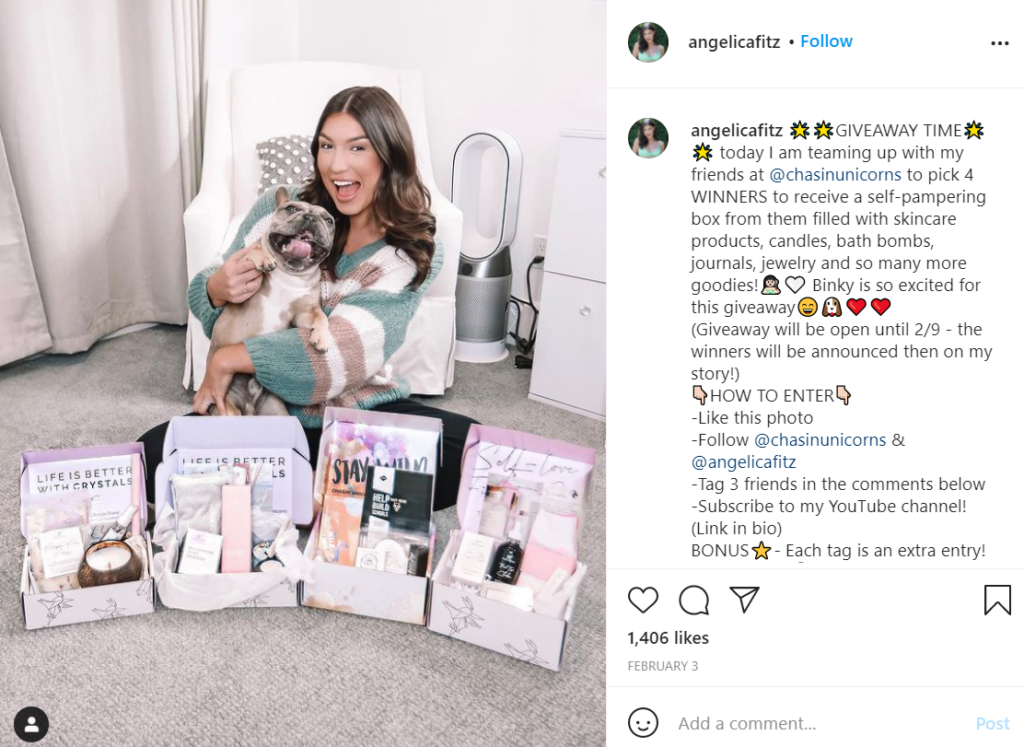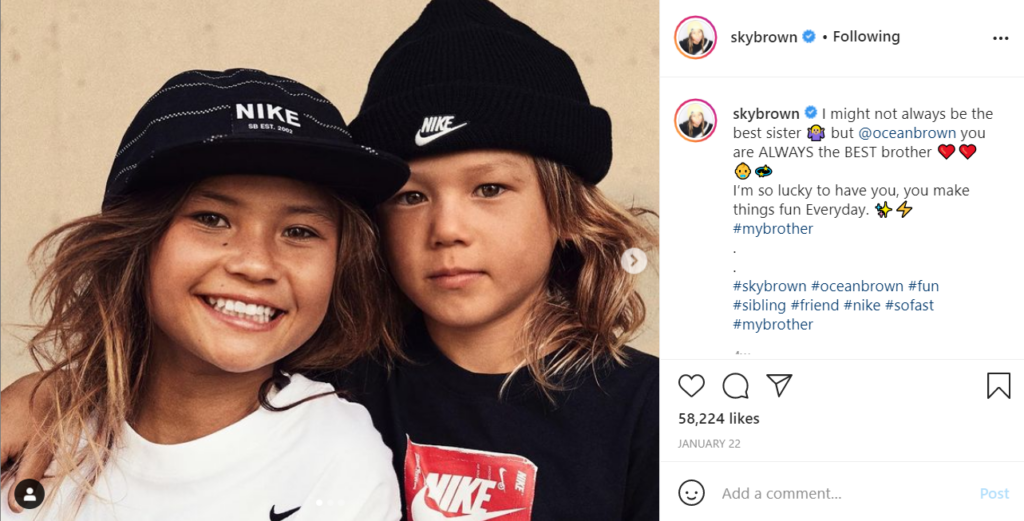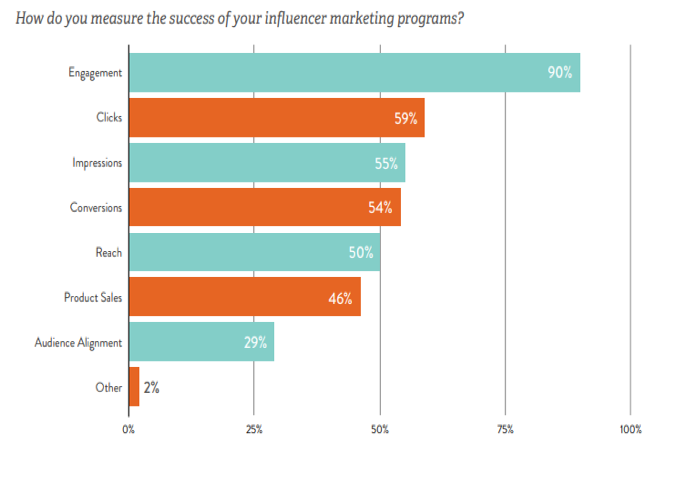What Is Influencer Marketing
Influencer marketing is a relatively recent type of marketing in which businesses hire influencers in a relative niche to present offers to their followers. This strategy allows you to put your brand in front of thousands of eyes without being overly promotional.
So, what is a social media influencer? Basically, an influencer is an individual who has built a large following on social media because of their knowledge and expertise on a specific topic. As influencers are looked up to by regular people, they are able to affect purchasing decisions and can help with promotion.
The definition of influencer marketing would not be complete without talking about following size. How many followers does one need in order to be considered an influencer? In general, people with up to 1,000 followers are considered nano-influencers, while people with up to 100,000 followers are considered micro-influencers, and people with larger followings would be macro-influencers.
A point worth stressing is follower engagement in terms of social media influencer marketing. A blogger may have a large audience, but if that audience is inactive, it won’t do you any good. Depending on the platform, engagement can be measured by factors such as reach, likes, comments, shares, retweets, views, etc.
Advantages of Influencer Marketing
With the rapid rise in social networks, influencer marketing is also gaining momentum. Almost 90% of businesses see influencer partnerships as powerful marketing strategies and have even found that their campaigns turned out to be just as efficient or even more efficient than they were pre-COVID.
So, why are influencer marketing campaigns so fruitful? For one, users have become skeptical of traditional advertising. Thus, an overwhelming 96% of users find the advertising industry to be unintegral. As a result, they look up to industry experts and tips from their friends.
Influencer endorsements, conversely, look less compulsive and are regarded as the most relevant channel for discovering new products by Gen Z and millennials. What’s more, 40% of consumers made purchases after seeing items being used by influencers.
A good collaboration helps brands address a few goals simultaneously and boost performance metrics. It’s also a great way to increase brand recognition and target specific groups.
Another major benefit to influencer programs is their affordability in contrast to other types of promotion. With so many influencers present on social media, one can easily find an appropriate partnership and not spend on a large-scale campaign right off the bat.
How to Develop an Influencer Marketing Strategy
Signing an influencer may sound like an uphill battle, but, just like other marketing strategies, it only requires you to chart a course and follow along. Read on for our tips on how to do influencer marketing most efficiently.
1. Identify Your Objectives
Building an influencer marketing strategy starts with a choice of objectives. Influencer advertising may help you:
- Create and grow brand awareness
- Make conversions and sales
- Boost social media engagement
- Generate backlinks
- Increase your outreach
- Gain website traffic
To ensure that hiring a social media influencer is the best option for your business, start by analyzing your niche: does it have relevant and trusted voices? For example, such collaborations are highly advantageous for lifestyle brands, while pharmaceutical businesses will have a harder time choosing the right partnership. Do proper research and, if it proves the effectiveness of influencer marketing, it’s time to reach out.
2. Pick the Perfect Influencer
Decide at the outset which platforms you will promote on. The right influencer should have authority on precisely those networks in order for the partnership to be useful. Your niche and target audience are also factored in when choosing where to start. If you are unsure, our free guide to social media marketing will help you make the right choice.
Once you decide, it’s time to select an influencer. One way to do so is to search on social networks with a relevant hashtag, such as: #sponsored, #promotion, #yourniche, or #location. Another approach is to automate your research by using influencer marketing tools. On Influence.co, you can post your offering and filter candidates by audience, category, collaborations, and more. NinjaOutreach allows you to find partnerships and reach out with automated emails. You can also use built-in analytic tools on each social network to identify potential partnerships.
Last, but not least, be wary of frauds, as they are quite common. Thoroughly check the influencer’s profile before arranging a partnership. Engagement is maybe one of the most important metrics to factor in, as it is indicative of how genuine the following is in contrast to fake profiles.
3. Choose a Campaign Type
Here are some of the most popular influencer marketing campaigns:
- Product placement. The influencer will share a picture with your product. They won’t necessarily write something specific about it, but will likely mention the brand so their followers can learn more.

- Sponsored content. This can refer to posts, images, or videos about your brand, as a one-off collaboration or a series of publications.
- Reviews. The influencer tests your product and shares their impressions with their followers. A sticking point here may be finding the right balance between positive and genuine text.
- Giveaway or contest. The influencer will give away your product to randomly chosen users who complete a certain action, like subscribing to your newsletter, leaving a comment, or whatever helps achieve your objectives.

- Brand ambassador. The influencer promotes your brand on an ongoing basis. While costlier, such a collaboration is more effective, as it shows the versatility of your offer and looks more credible to followers.

- Social media takeover. Unlike previous examples, the takeover is carried out on your social media profile and not the influencer’s. Here, you hand over the reins to the influencer who’ll be posting on your behalf.
Whatever form of collaboration you launch, try to give the influencer creative freedom. The best promotion will be genuine and reflect their personality and voice. Otherwise, followers might see the posts as fishy, which won’t be to your advantage.
4. Set a Budget
To make your search for influencers more refined, it’s important to know how much you can spend. This will also allow you to lay the groundwork and not blow the budget on marketing. Different points are factored in, such as:
- Niche and topic. For technical industries, promotion can be costlier.
- The influencer’s number of followers and engagement rate.
- Pricing model. Influencers can charge you per post, number of clicks, acquisition, subscribers, and views.
- Platform. Here is a brief overview of the average cost per post on different social networks:
- Facebook: $25 per 1,000 followers
- Instagram: $10 per 1,000 followers
- Twitter: $2 per 1,000 followers
- Snapchat: $10 per 1,000 followers
- YouTube: $20 per video per 1,000 subscribers OR $50 to $100 per 1,000 views
- Blog: $60 per post per 1,000 visitors
- Type of content. The price may vary depending on whether you want the influencer to produce a blog post, video, etc.
- Post length. It’s better to specify the desired post length from the start in order to avoid additional costs.
- Cross-promotion. Running a promotion on more than one platform is beneficial if your audience uses different social networks.
5. Measure Results
Spare no effort to monitor progress and stay on track for your goals. Doing so helps you ensure timeliness as you implement the project, as influencers may fall behind schedule. Furthermore, you’ll avoid unforeseen results and can refine the campaign as necessary. Choose a few dates on which you’ll check in with the influencer to track the progress of the campaign.
The following metrics can help you monitor the campaign:
- Views. The number of actual impressions of the post.
- Traffic. Unique visits to your site though the influencer’s link.
- Likes, shares, and comments. These metrics show how many people find your content engaging.
- Revenue. If you aim to make sales through the campaign, you can measure the income generated by the influencer’s post. You can do that through affiliate links, special promo codes, or analytic tools.
If you are still uncertain, here are the metrics that most marketers use to assess their campaign effectiveness, as shown in the graph below.

Best Influencer Marketing Tools
Setting up a campaign manually takes a lot of work, but the right tools may help. First, explore built-in analytics on social networks. Second, try out dedicated influencer marketing platforms that will help ensure you don’t miss anything.
- With TweetReach, you can monitor social media by hashtags, names, keywords, etc., run competitive analysis, track post performance, and more.
- Upfluence is a comprehensive tool to monitor the entire campaign. You can search for top influencers using different filters, send emails, track opens, get real-time statistics, and track engagement.
- On Klear, you can search for influencers, manage your partnerships, and track results.
- BuzzSumo allows you to search for influencers by different categories, run competitor analysis, curate content, monitor social networks, and more.
- Followerwonk is a free software to identify Twitter influencers and filter them by niches, followers, and authority.
- BuzzStream is a blogger outreach platform where one can find influencers and manage their campaigns.
Yet another way to track influencer marketing statistics is through hashtags or UTM parameters. You can create a dedicated hashtag for a particular campaign and ask the influencer to use it for all posts. UTM tracking links with short text codes allow you to keep track of all website visitors who came through the influencer’s link.
How to Grow Your Business With Influencer Marketing
Influencer marketing is one of the smartest ways to seize the attention of a larger crowd and boost engagement. It helps genuinely present your offer’s advantages without being overly promotional. Setting up a campaign is similar to other marketing strategies: you need to do research, set a budget, find the right partner, and monitor your progress. Along the way, you can refine the approach and ensure the efficiency of your campaign.




